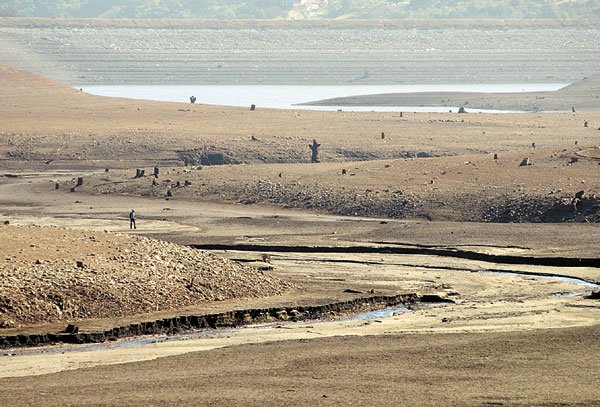Gilroy
– While freezing weather has swooped into most of the state,
there is very little sign of rain for the next week as a high
pressure system spins over Northern California, leaving the area
drier than normal, which has farmers casting a wary eye
skyward.
Gilroy – While freezing weather has swooped into most of the state, there is very little sign of rain for the next week as a high pressure system spins over Northern California, leaving the area drier than normal, which has farmers casting a wary eye skyward.
Normal monthly rainfall for January is 4.3 inches, and this year Gilroy has seen just 0.19 inches of rain this month when the area should be seeing showers on a consistent basis, said National Weather Service forecaster Steve Anderson. It’s worse in Hollister where a typical January sees 2.68 inches of rain, but this year January has produced a paltry 0.09 inches. If this pace continues, January will shape up to be the driest month in Hollister since the Weather Service began keeping records in 1948, said Bob Benjamin, another NWS forecaster.
Area farmers, such as Richard Silva of Top Flavor Farms in Hollister, are hoping for some precipitation. Row-crop growers rely on rain to wash salt out of the soil, Silva said.
Apricot grower George Bonacich, who is president of the San Benito County Farm Bureau, said his trees’ roots start growing at the end of January. If it doesn’t rain in the next week, Bonacich and other orchardists are going to have to start irrigating – but he isn’t too worried.
“As long as water is available, being dry never really hurts,” Bonacich said. “In fact, rain at the wrong time can be the worst thing that can happen.”
So where did all the rain go?
In past years, a high pressure system positioned lower in the eastern Pacific or south of California pushed storms up as the system rotated counter-clockwise. Anderson described the atmosphere as similar to water, like a river of air. If one visualizes a rock in a stream, the water goes around the rock. The high pressure system pushes the windflow and the storms in different directions away from the high pressure areas. In short, there’s a big rock sitting atop Northern California.
The lack of rainfall is also evident in area reservoirs.
“Uvas currently is pretty low due to the loss of rainfall,” said Candice Kwok-Smith, spokesperson for the Santa Clara Valley Water District. She assured it will not lead to a drought.
There is plenty of water for the county, said Keith Whitman, water supply manager of for the district.
“People look at the reservoir and say, ‘Oh my God, we’re almost out of water.’ What they don’t see is that there is 10 times the amount of water stored in ground water basins.” Much of the county’s drinking water comes from the Llagas ground water basin – a large aquifer that can be thought of as an underground lake.
“The greater concern is not enough water in the stream,” said Whitman.
The Uvas reservoir is unusually low not only because of the lack of rain, but because more water than usual was released into the creek.
An agreement between the water district and the State Department of Fish And Game requires the district to release a certain amount of water from the reservoir into the creek where steelhead trout live. Steelhead trout are on the endangered species list and many precautions must be taken to preserve them.
But Benjamin, the NWS forecaster, emphasized that there are still a few months left in the rainy season. Although there aren’t any major downpours in the forecast, Benjamin said a single wet month could turn things around.














